Now Reading: 10 Best Places to Visit in Jamnagar for Culture, Lakes & Temples
-
01
10 Best Places to Visit in Jamnagar for Culture, Lakes & Temples

10 Best Places to Visit in Jamnagar for Culture, Lakes & Temples
1. Ranmal LakeRanmal Lake (Lakhota Lake) – A Jewel in the Heart of Jamnagar Ranmal Lake
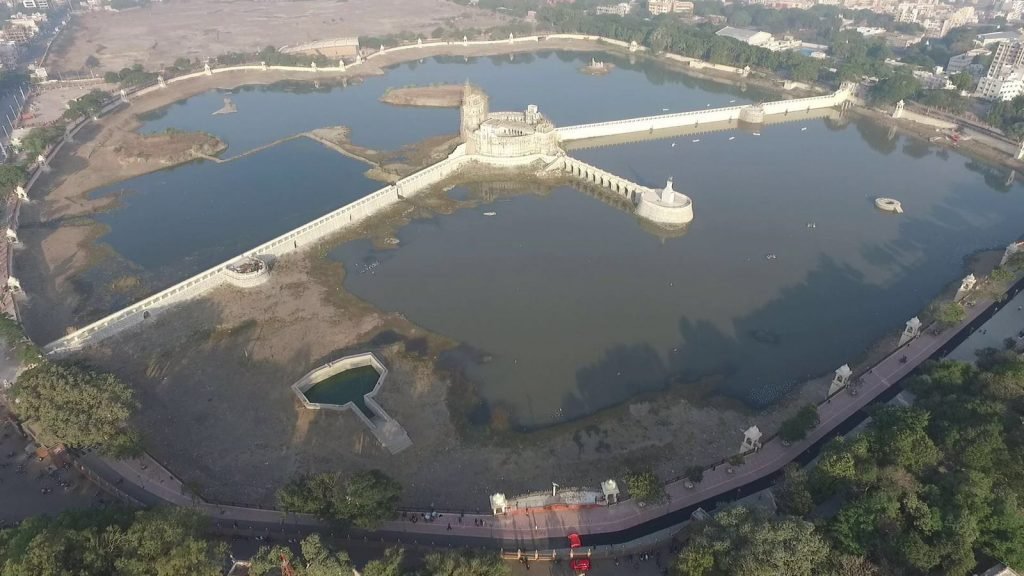
The three parts of Ranmal Lake (Lakhota Lake) occupy 5 lakh square meters at the center of Jamnagar city. Ranmal Lake creates a peaceful sanctuary for visitors along with a scenic attraction that beautifies the city to draw both humans and migratory birds.
By Jam Ranmalji II the lake was built during the period from 1820 to 1852 which established it as a fundamental landmark of Jamnagar’s historical enrichment. The lake surrounds itself with different relaxation spots including pavilions and bastions together with artistic gardens which create a bright serene environment for visitors.
A magnificent structure built with millions of rupees stands in the center of the lake as Lakhota Palace. The island fort exists both as a work of art and as evidence of the noble nature of the ruling dynasty due to its kind and affectionate reign during that time.
Attractions Around Ranmal Lake
The upgraded lake paths with new enclosures have become perfect terrains for both morning and evening jogging activities.
History Museum – A brand-new museum on the east side of the lake showcases Jamnagar’s rich history.
The mid-19th-century Lakhota Palace situated in the center of the lake contains a compact museum filled with 9th to 18th century items including weaponry and manuscripts and pottery.
Brief History
Jam Rawal established Jamnagar as the new settlement of his royal dynasty in 1540. The royal dynasty constructed Lakhota Palace which started its existence as an arsenal storage facility to maintain military readiness during conflicts. The palace positioned at the central lake point successfully prevented invaders from reaching it which elevated its historical value.
Best Time to Visit
Nature enthusiasts along with birdwatchers should plan their excursion to Ranmal Lake (Lakhota Lake) during November to February since these months provide the perfect weather conditions for migratory bird sightings and offer breathtaking views of the lake.
Conclusion
The lake attracts all visitors with an interest in history and nature together with photographers. Ranmal Lake (Lakhota Lake) serves visitors with a complete package of tranquility through its Palace reflections and artifacts and natural environment that creates an unmissable attraction for Jamnagar.
Experience the ultimate marine adventure at the Marine National Park in Jamnagar which lies in Gujarat. The extraordinary marine sanctuary covers 163 square kilometers and provides habitat to captivating coral reefs and interesting marine wildlife and active underwater environments.
The available thrilling activities at this location allow visitors to:
Marine National Park in Jamnagar demonstrates breathtaking underwater adventures among vibrant coral reefs where people encounter sea anemones jellyfish octopuses and starfish together with vibrant coral reefs.
The mangrove forests can be explored by boat rides alongside their exclusive species including dolphins pufferfish and crabs and birds.
This rich environment supports the survival of many exotic birds which include flamingos and kingfishers and egrets among others.
Visitor Information
Location: C622+P9C, Asha Marudi, Gujarat 361330
Timings: 8:00 AM to 6:00 PM
Entry Fee: ₹40 per person for Indians, ₹650 for foreigners
Best Time to Visit
Visitors should plan their marine national park travel between the months of November to March due to better conditions for wildlife exploration and favorable weather conditions.
Conclusion
Any nature enthusiast or animal admirer or adventure seeker will find an indelible experience at Marine National Park. The marine paradise offers visitors an extraordinary adventure experience because visitors can see vibrant marine creatures and serene mangrove forests along with rare bird species. People visiting Jamnagar should include Marine National Park as a must-see destination for awe-inspiring underwater encounters.
3. Dwarkadhish Temple
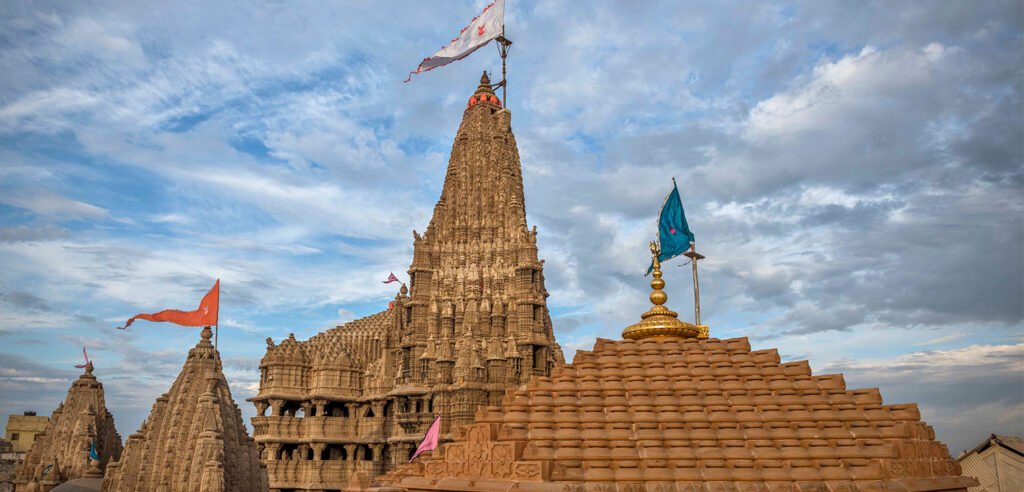
One of the holiest pilgrimage sites situated in Dwarka stands the Dwarkadhish Temple (Jagat Mandir which visitors consider to be the prime religious destination. Vajranabh established this temple more than 2,500 years ago as Lord Krishna’s great-grandson. Renovations through multiple time periods have shaped this old place of worship mainly during the 16th and 19th centuries.
The temple resides on a minor hill where visitors must climb more than 50 steps to access its holy chamber. The main shrine containing the Lord Krishna altar is housed within the heavily decorated temple walls. Mythical characters along with legends are intricately carved across the temple walls along with various smaller shrines built into the complex. A flag flown from the temple spire reaches 43 meters into the sky while streaming the airborne sea breezes of the Arabian Sea across its 52-yard cloth surface.
The temple contains two entrance gateways which are Swarg Dwar (Heaven’s Gate) for entry and Moksh Dwar (Liberation Gate) for departure. Sudama Setu serves as a bridge that establishes a connection between the temple complex and both the Gomti Creek and the beach during its operational days from 7:00 AM until 1:00 PM before resuming service from 4:00 PM through to 7:30 PM.
History
Dwarka holds a significant place among the four major pilgrimage sites known as Char Dhams in India together with Badrinath Puri and Rameshwaram. It is said that Lord Krishna traveled from Braj in Uttar Pradesh to this location after settling in the area which later received the establishment of the Dwarkadhish Temple by his grandson.
The present seventh manifestation of Dwarka exists above the water which has engulfed the city six previous times. The history shows that Mahmud Begada attacked the temple before its reconstruction took place in the 15th–16th century. Hindu theologian and philosopher Adi Shankaracharya bestowed his honor upon the temple during the 8th century.
Best Time to Visit
A visit to the Dwarkadhish Temple should take place during November through February since the weather conditions remain comfortable. The temple holds special annual celebrations for Janmashtami which creates fruitful religious encounters for tourists who visit.
Conclusion
Dwarkadhish Temple stands as a remarkable work of architecture as well as a profound sacred location. People visit Dwarkadhish Temple to experience awe and spiritual connection because of its strategic Arabian Sea-Gomti River setting while embracing its mythological roots and historical legacy. All visitors to Dwarka should plan to visit this legendary temple because it promises a memorable spiritual adventure.
4. Khijadiya Bird Sanctuary

We cannot miss visiting the Khijadiya Bird Sanctuary situated in Jamnagar because it serves as a sanctuary for nature enthusiasts and birdwatchers. At 6.05 square kilometers of land area this sanctuary stands among the largest bird sanctuaries in Gujarat due to its diverse bird population of both arriving and native species.
A Unique Birdwatching Experience
The Khijadiya Bird Sanctuary lets its visitors follow peaceful pathways through marshlands where they can observe colorful birds and their musical cacophony. More than 300 species of birds utilize this area where flamingos, pelicans, herons, cranes and egrets find their habitats. Conservation specialists together with wildlife photographers should including bird enthusiasts identify this sanctuary as their perfect location.
Eco-Tourism and Outdoor Activities
The eco-tourism activities at this location include multiple opportunities to experience the sanctuary such as:
Nature trails – Explore the serene landscapes of the sanctuary.
Wildlife photography – Capture stunning images of the diverse bird species.
Olympic fans can have a tranquil boating experience that allows views of close-up birds.
Visitor Information
Location: Jamnagar, Sachana, Gujarat 361120
Timings: 6:00 AM to 6:00 PM
Entry Fee: ₹40 per person
Conclusion
Wildlife enthusiasts together with photographers and nature-lovers should experience Khijadiya Bird Sanctuary. Members of this sanctuary can find peace while they photograph birds and stroll along marshlands as well as hear the songs of birds through its natural surroundings. Any visitor of Jamnagar should prioritize a visit to this biodiversity hotspot included within their travel destinations.
5. Lakhota Palace
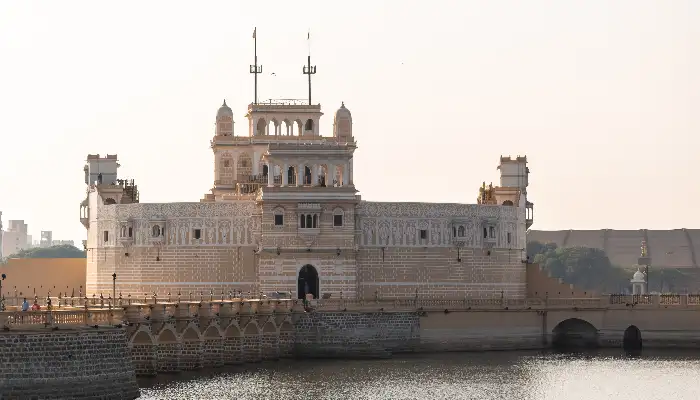
Lakhota Palace – A Majestic Gem of Jamnagar
The exploration of Jamnagar starts at the Lakhota Palace which stands as an iconic landmark of the city. In the 19th century Lakhota Lake provided a serene home to this magnificent palace which showcases Jamnagar’s regal history.
Architectural Marvel and Museum
Lakhota Palace from the nineteenth century features exquisite architectural elements which demonstrate the royal style of that period. The museum located in this palace showcases various artifacts together with sculptures and ancient warfare pieces to show Jamnagar’s historical development.
A Scenic and Serene Experience
People who visit the palace can stroll at their pace as they absorb the peaceful setting while enjoying beautiful views of Lakhota Lake. A boat trip across Lakhota Lake provides visitors with an opportunity to experience more fully the royal magnificence of this magnificent attraction.
Visitor Information
Location: F379+VRR, Government Colony, Jamnagar, Gujarat
Timings: 6:00 AM to 10:00 PM
Entry Fee: ₹25 per person for Indians
Conclusion
History buffs and both architecture fans and people seeking relaxation in Jamnagar must visit Lakhota Palace. The majestic attraction provides visitors a memorable experience through its historical artifacts while allowing them to stroll near the lake and take boat rides on the premises. When visiting Jamnagar you should plan to see Lakhota Palace because it serves as a magnificent royal and scenic destination.
6. Pratap Vilas Palace Jamnagar
Visitors should experience the magnificent Pratap Vilas Palace which can be found in JamnagarVisitors should experience the magnificent Pratap Vilas Palace which can be found in Jamnagar
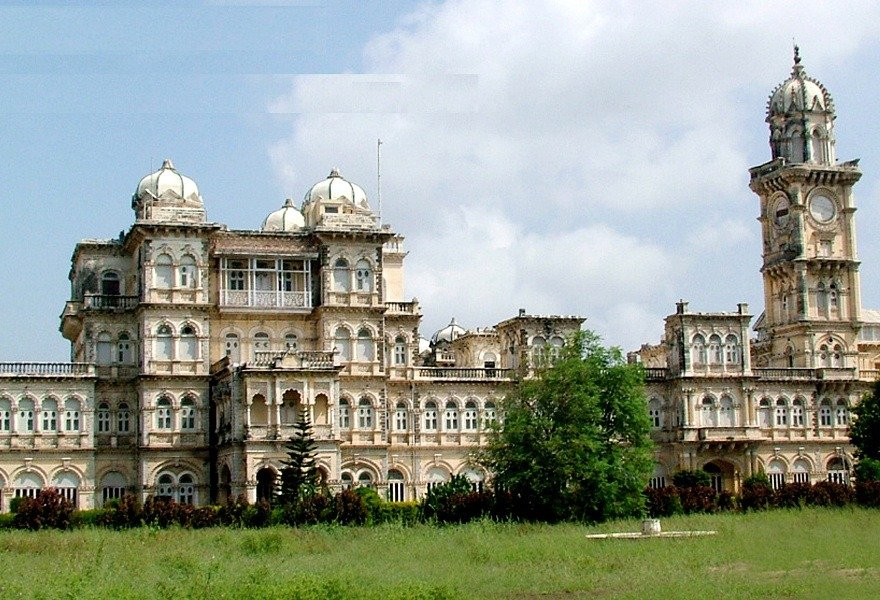
Pratap Vilas Palace resides near Jamnagar Railway Station within 2 km of distance in Jamnagar, Gujarat. Tourists recognize Pratap Vilas Palace as a superb Saurashtra royal palace that history enthusiasts along with architecture enthusiasts should not miss.
History & Architecture
Jam Ranjit Singhji constructed Pratap Vilas Palace over nine years from its initial construction start in 1907 until it was finished during 1915. This magnificent building shows a combination of Indo-Saracenic architectural elements with European design components. This building stands apart in Gujarat because of its strong architectural similarities with the Victoria Memorial Building which stands in Kolkata.
Three distinctive glass domes make the palace a highly attractive sight because they enhance its majestic style. In addition to the domes the pillars display unique carvings of flowers with leaves along with creepers and birds and animals that make the building more visually appealing. The interior spaces showcase splendid artistry from historic times including both historical portrait paintings and swords with armor inside the hallways.
A Glimpse into the Royal Era
Kingdom guests used to stay in Pratap Vilas Palace when it served as a guest house for visiting dignitaries but today it stands in extensive open areas. During 1968 Maharaja Kumar Ranjit Singhji took the surrounding land of the palace to form a Natural Park which further elevated its natural charm.
Despite the damage from the 2001 Gujarat earthquake the palace survived and remains standing today as a symbol of former royal splendor following its loss of several parapets and upper-wall partitioning. Walking through the hallways enables visitors to experience firsthand the royal splendor of that historical era.
Visiting the Palace
Members of the public who wish to see parts of Pratap Vilas Palace need to obtain permission from Darbargarh Palace. The palace retains some areas which are unavailable to visitors even though limited sections can be visited.
Timings: 11:00 AM – 5:00 PM
Entry Fee: Rs. 100 per person
All visitors to Jamnagar should include Pratap Vilas Palace as part of their heritage site tour. This site stands out because of its dual importance in history and design which makes it attractive to tourists.
7. Darbargadh Palace: A Timeless Royal Legacy in Jamnagar
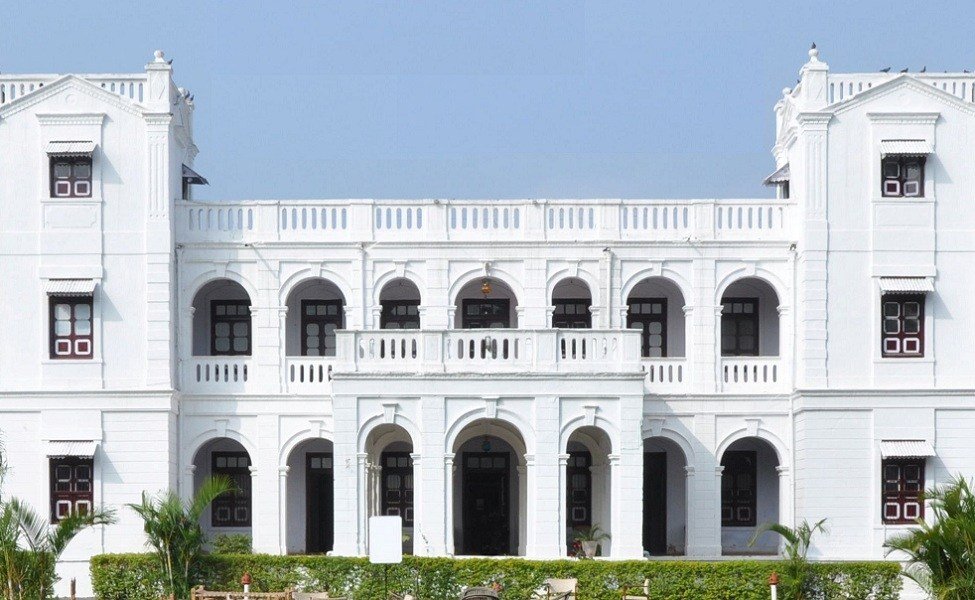
Darbargadh Palace exists as a significant historical building near the Jamnagar Railway Station distance of 5 kilometers. The historic building known as Darbargadh Palace exists as Jamnagar’s premier tourist attraction because it originally served as Jam Sahib’s first royal residence and it sits to the east of Chandi Bazaar.
History
Construction of Darbargadh Palace started in 1540 AD during the same time when Jamnagar city came into existence through Jam Rawal. Throughout various years developers turned the structure into its present state by uniting elements of Rajput and European design principles. This imposing palace stands in the middle of Jamnagar as it preserves the heritage of the former period.
Architectural Marvel
The rectangular layout of Darbargadh Palace receives its boundaries from fortified walls that include entrance gates placed at cardinal points. A number of exquisite architectural details decorate the palace’s various buildings. Notable features include:
- Intricate stone carvings
- Jali-screens and ornate pillars
- Elaborate mirror decorations
- The palace walls display battlefield and royal life scenes through sculptural and painted artwork.
A hall inside the building shows a cartographic detail of Jamnagar which research indicates was made during 1912. Traditionally, jharokha balconies make their appearance on the palace exterior walls through carefully executed carvings.
The Royal Legacy of Tilamedi
The ceremonial location for King crowning events exists as Tilamedi which forms a major part of the palace structure. The wooden throne of Jam Rawal serves with his sword and dagger and spear and many royal artifacts survive as preserved objects to display the royal past.
- Urban Landmarks Around Darbargadh
- Jam Ranjitsingh constructed two vital urban development initiatives which faced Darbargadh Palace during his regnal period.
- Willington Crescent – A grand semicircular arcade.
- Chelmsford Market functions as a two-story shopping center that served as the gathering point for Maharajas in their public forums.
- A highly respected statue of Jam Ranjitsinghji can be found centrally positioned in front of Willington Crescent to honor his role in building the city forward.
Resilience Through Time
Despite severe destruction from the 2001 earthquake Darbargadh Palace survived along with its historical value and magnificent domain. The remarkable cultural heritage of Jamnagar exists as a draw for history fans and architecture fans both.
Visitor Information
Timings: 9 AM – 9 PM
Entry Fee: Free
The historical monument Darbargadh Palace demonstrates its royal legacy of Jamnagar from the past by acting as an active reminder of the city’s former aristocracy. The majestic structure invites all visiting guests to receive a deep historical experience that transports them through time to Gujarat’s royal heritage.
8. Pirotan Island
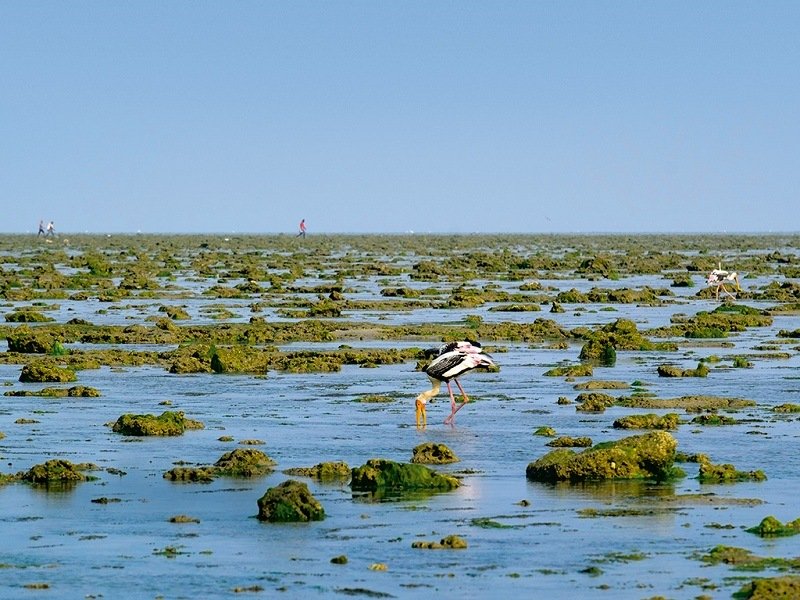
You can find Pirotan Island at a distance of 10 kilometers from Jamnagar Railway Station within the Gulf of Kutch. TPirotan Island stands as Gujarat’s premier natural attraction due to its flawless beauty so travelers should include it on their visit list.
A Part of India’s First Marine National Park
The 3 square kilometer area of Pirotan Island belongs to the 42 islands that compose India’s initial Marine National Park. Visitors can access both Narara Island and this island which remain two of the open exploring locations. Along with coral reefs and mangroves the island provides marine enthusiasts with the opportunity to observe jellyfish octopuses starfish sea snakes hermit crabs sea horses sea slugs green sea turtles and dolphins together with various other aquatic creatures. The island attracts bird watchers because it hosts pelicans together with herring gulls sea gulls and black-headed gulls in addition to other bird species.
Historical and Cultural Significance
Historical records show that Pirotan Island received its former name ‘Pir jo thaan’ because it was dedicated to Saint Khwaja Khizer Rahmatullahialaih. A holy shrine offering reverence to the saint can be found on the island which expands its spiritual value. The island stands empty with the exception of the lighthouse workers along with the forest guard and shrine server named Mujhavar.
Reaching Pirotan Island
The island rests at seven nautical miles from Rozi Port and stands twelve nautical miles from Bedi Port. Vegetables available there. The only way to travel to Pirotan Island is by hiring boats from the two ports that need 1.5 to 2 hours to reach the destination. Boat travel to Pirotan Island and departures must wait for high tide because of water shallowness. Users must check local tide information since timings change frequently.
Important Travel Information
- Travelers visiting the island are responsible for bringing everything they need because the island does not offer food nor accommodations nor water facilities.
- Travel duration on Pirotan Island spreads across 10 to 12 hours based on the tide timing.
- Before entering the island three governing permits from Forest Department and Ports Authority and Customs Department must be secured.
- To visit this island foreign citizens need both an approval from the Police Department in addition to their standard permit.
- Pirotan Island visitors can access the destination in one-day excursions arranged by the ‘Nawanagar Nature Club’.
Timings & Cost
Timings: Dependent on tidal conditions
Traveling to Pirotan Island as a round trip costs Rs. 2100 to Rs. 2500 which includes fees and boat hire together with packed food and water.
9. Bhidbhanjan Temple
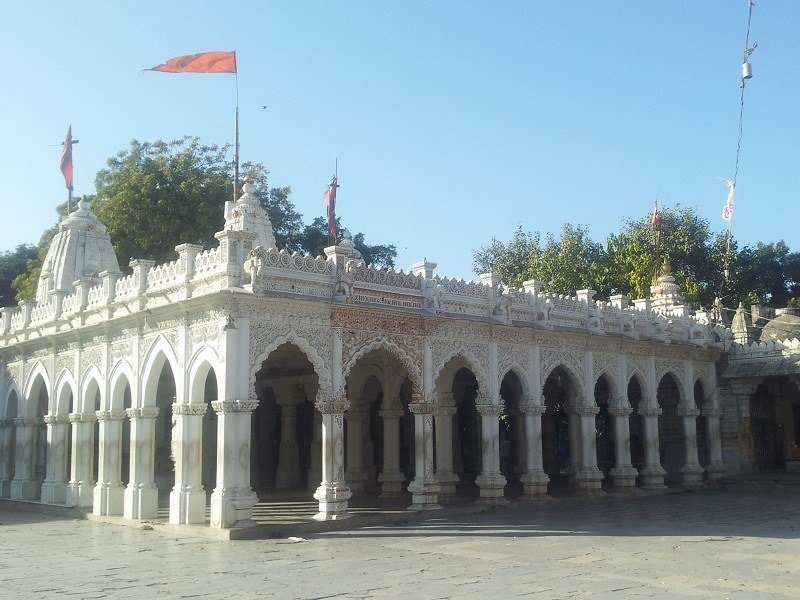
You can find Pirotan Island at a distance of 10 kilometers from Jamnagar Railway Station within the Gulf of Kutch. TPirotan Island stands as Gujarat’s premier natural attraction due to its flawless beauty so travelers should include it on their visit list.
A Part of India’s First Marine National Park
The 3 square kilometer area of Pirotan Island belongs to the 42 islands that compose India’s initial Marine National Park. Visitors can access both Narara Island and this island which remain two of the open exploring locations. Along with coral reefs and mangroves the island provides marine enthusiasts with the opportunity to observe jellyfish octopuses starfish sea snakes hermit crabs sea horses sea slugs green sea turtles and dolphins together with various other aquatic creatures. The island attracts bird watchers because it hosts pelicans together with herring gulls sea gulls and black-headed gulls in addition to other bird species.
Historical and Cultural Significance
Historical records show that Pirotan Island received its former name ‘Pir jo thaan’ because it was dedicated to Saint Khwaja Khizer Rahmatullahialaih. A holy shrine offering reverence to the saint can be found on the island which expands its spiritual value. The island stands empty with the exception of the lighthouse workers along with the forest guard and shrine server named Mujhavar.
Reaching Pirotan Island
The island rests at seven nautical miles from Rozi Port and stands twelve nautical miles from Bedi Port. Vegetables available there. The only way to travel to Pirotan Island is by hiring boats from the two ports that need 1.5 to 2 hours to reach the destination. Boat travel to Pirotan Island and departures must wait for high tide because of water shallowness. Users must check local tide information since timings change frequently.
Important Travel Information
- Travelers visiting the island are responsible for bringing everything they need because the island does not offer food nor accommodations nor water facilities.
- Travel duration on Pirotan Island spreads across 10 to 12 hours based on the tide timing.
- Before entering the island three governing permits from Forest Department and Ports Authority and Customs Department must be secured.
- To visit this island foreign citizens need both an approval from the Police Department in addition to their standard permit.
- Pirotan Island visitors can access the destination in one-day excursions arranged by the ‘Nawanagar Nature Club’.
Timings & Cost
Timings: Dependent on tidal conditions
Traveling to Pirotan Island as a round trip costs Rs. 2100 to Rs. 2500 which includes fees and boat hire together with packed food and water.
10. Bala Hanuman Temple, Jamnagar
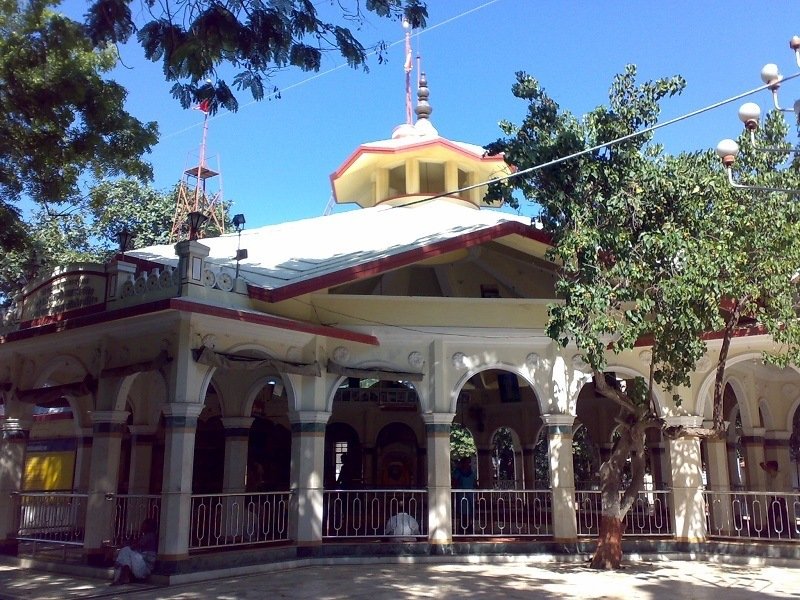
The Bala Hanuman Temple finds its home at the southeastern part of Ranmal Lake in Jamnagar, Gujarat establishing itself as a prominent Hindu place of worship within the state. Devotees along with visitors flock to this site because it carries both religious significance and a remarkable historical distinction which creates a peaceful religious encounter.
A Temple of Eternal Chanting
The Bala Hanuman Temple emerged in 1964 under the guidance of Shri Prembhikshuji Maharaj to worship Lord Hanuman while maintaining two additional divine statues of Lord Ram along with Lakshman and Goddess Sita. This temple earned its Guinness Book of World Records distinction due to the continuous recitation of “Sri Ram, Jai Ram, Jai Jai Ram” beginning from its day of establishment. For decades the temple has maintained round-the-clock sacred hymn devotion which shimmers like an eternal devotion beacon.
Architectural Grandeur and Spiritual Significance
The temple shows off an elaborate architectural appearance which combines distinctive pillars and religious decorative elements. Artistry and devotion transform every part of the temple into a spiritual space which attracts visitors through its divine atmosphere.
People in Jamnagar strongly believe that the Bala Hanuman Temple guards against natural disasters so Jamnagar receives both peace and prosperity. Devotees from all parts of the world make their way to this temple because of its practice of continuous chanting known as Akhand Ram Dhun which is considered the spiritual center of the place.
Aarti Timings and Visiting Hours
Temple Darshan Timings:
Morning: 6:00 AM – 12:00 PM
Evening: 4:30 PM – 10:00 PM
The temple performs Aarti ceremonies two times each day which creates a spiritual atmosphere within the premises.
During nighttime hours any worshiper can experience the persistent chant of Lord Ram by visiting the temple since it maintains availability for continuous attendance.
A Must-Visit Spiritual Destination
Every person including believers and tourists in Gujarat and devotees can experience divine connection through the Bala Hanuman Temple in Jamnagar. The spiritual temple attracts visitors through its unending religious devotions along with its dynamic spirit which comes from the devoted followers who make this place a religious must-see.
related articles : 15 Best Places to Visit in Vadodara for History, Culture & Leisure
Stay Informed With the Latest & Most Important News
Previous Post
Next Post
-
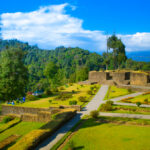 01Top 5 Best Places Visiting in Gyalshing – Monasteries, Lakes & Scenic Escapes
01Top 5 Best Places Visiting in Gyalshing – Monasteries, Lakes & Scenic Escapes -
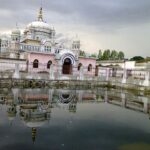 02Top 5 Best Places Visiting in Panna – Temples, Waterfalls & Wildlife Escapes
02Top 5 Best Places Visiting in Panna – Temples, Waterfalls & Wildlife Escapes -
 03Top 5 Best Places to Visit in Malerkotla – Malerkotla Fort, Sheesh Mahal & More
03Top 5 Best Places to Visit in Malerkotla – Malerkotla Fort, Sheesh Mahal & More -
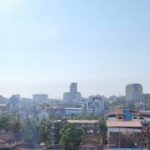 04Top 10 Best Places Visiting in Dakshina Kannad for Culture, Nature & Coastal Charm
04Top 10 Best Places Visiting in Dakshina Kannad for Culture, Nature & Coastal Charm -
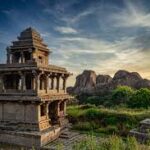 05Top 2 Best Places Visiting in Chitradurga for History, Nature & Adventure
05Top 2 Best Places Visiting in Chitradurga for History, Nature & Adventure -
 06Best Places Visiting in Shopian – Explore Top Attractions & Hidden Gems
06Best Places Visiting in Shopian – Explore Top Attractions & Hidden Gems -
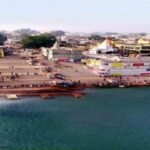 07Best Places Visiting in Narmadapuram – Temples, Waterfalls & Wildlife Escapes
07Best Places Visiting in Narmadapuram – Temples, Waterfalls & Wildlife Escapes














Pingback: 10 Best Places to Visit in Kutch-Bhuj – Desert to Heritage Guide